featured
Current Roadside Tests For Marijuana Impairment Are ‘Pseudoscientific,’ Law Professor Says
Published
3 days agoon
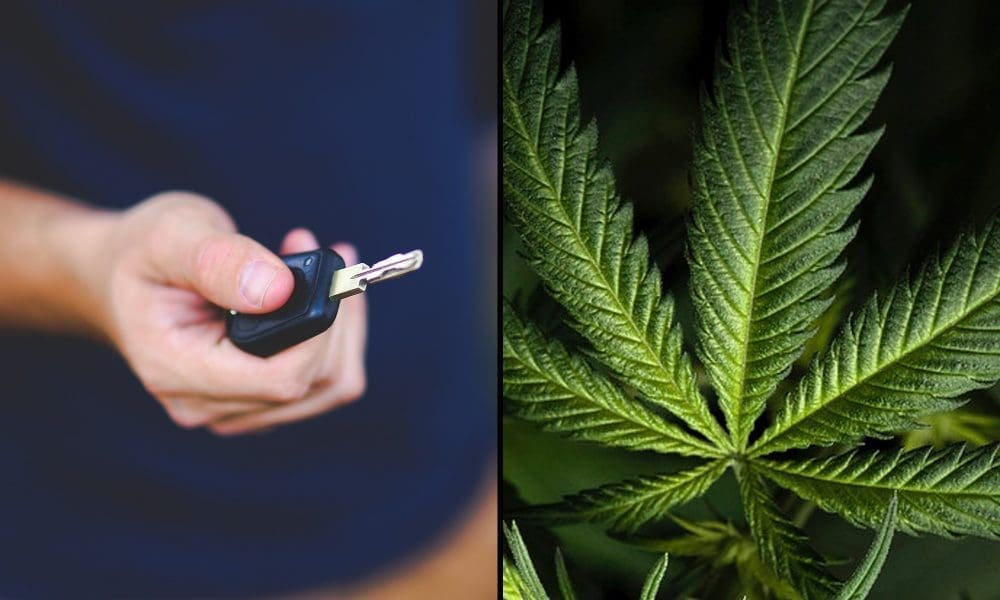
Roadside tests for marijuana impairment that are widely used by police departments across the U.S. are “inadequate,” according to a newly published commentary by a Rutgers University law professor who is urging policymakers to take a more scientifically robust approach to transportation safety while relying less on law enforcement’s ostensible expertise.
The paper, by William J. McNichol of Rutgers University’s Camden School of Law, asserts that current approaches to detecting cannabis impairment “either merely imitate tools used to identify alcohol based impairment without taking into account important differences between the effects of these molecules or they are pseudoscientific ‘police science.’”
“The substance-use science community must take the lead in formulating an informed marijuana impairment detection policy,” McNichol writes, “rather than leave this in the hands of law enforcement.”
As more jurisdictions legalize and regulate marijuana, the paper says, minimizing potential harm “depends on being able to promptly, accurately, and objectively identify dangerous, marijuana- based impairment on the highway and in the workplace,” McNichol argues. “Existing tools for making this on-the-spot, medico-legal determination are inadequate, owing in large part to their lack of scientific rigor.”
Unlike what he describes as a scientifically validated “close correlation” between blood alcohol concentration and fatal vehicle accidents, tests for the presence cannabinoids and their metabolites don’t provide a clear indication that someone is behaviorally impaired.
“The science is fairly clear that the presence per se of cannabinoids in bodily fluids ‘provides little, if any, information concerning behavioral impairment,’” the article says, citing past research.
“Even if there was a well-demonstrated correlation between impairment and a specific concentration of cannabinoids in bodily fluids,” it adds, “the analytical chemistry required to reliably quantify cannabinoids in body fluids is difficult to execute in the field. Police departments have been reported to have given up on it, even after expending significant resources on the attempt.”
Another approach to identifying impairment is the use of so-called drug recognition experts (DREs) or workplace impairment recognition experts (WIREs).
“Both DREs and WIREs claim that their expert opinions on the question of impairment are objective, reliable, and grounded in science,” McNichol writes, “even though the procedures they use were never designed to detect impairment and do not do so.”
The use of DREs, which originated at the Los Angeles Police Department, “is very popular among police officers and prosecutors,” he notes:
“It is a classic example of ‘police science’—techniques developed by police officers for use in their police work. That is to say, it is not science-based at all but is merely a police officer’s lay opinion encrusted with some of the trappings but little or none of the substance of science.”
For example, DRE protocols typically call for investigators to check to see whether a subject’s muscles feel “normal,” “rigid” or “flaccid,” the paper says, even though health care professionals “do not measure muscle tone this way…and would not recognize a police officer’s roadside squeezes as a valid method of measuring muscle tone.”
Other signs of impairment, according to DRE training, include a high heart rate and elevated blood pressure, McNichol points out, “even though about half of the U.S. adult population has high blood pressure when completely sober…to say nothing of the effect on one’s blood pressure of having a police officer measure it on the roadside or in a police station after an accident—settings that in 2009 the Kentucky Supreme Court recognized can fully account for elevated blood pressure.”
“The lack of scientific rigor in the DRE Protocol,” the paper says, “inevitably leads to inconsistent, almost random results.”
“In a 1998 controlled lab study,” it adds, “the DRE Protocol produced either false negative or false positive results 45.5% of the time—not much better than a coin toss.”
The solution to the problem, McNichol suggests, is simple—though not necessarily easy to achieve.
“We must actually do what, so far, we have only pretended to do,” he writes. “We must develop and adopt a scientifically valid, objective, and reliable method for detection of marijuana-based impairment that can be practically implemented in the field.”
A law professor, McNichol does not dig deep into alternative roadside tests for cannabis use, but he calls for the development of “new psychomotor tests” as well as further study into potential “biochemical markers of impairment—including the full range of natural and synthetic cannabinoids as well as their metabolites.”
“Most importantly, leadership of the legal and public policy discussions in this area must not be left in the hands of police officers and their associations, as is now the case,” he writes. “The substance-use science community must take the lead, not only in the basic research that provides the foundation for sound laws and policies but also in the legal and policy discussions that will establish those sound policies.”
The new editorial from McNichol, initially published online late last year, appears in the current issue of the Journal of Studies on Alcohol and Drugs. In the same issue, a pair from the Center for Medicinal Cannabis Research at the University of California at San Diego similarly calls for disinterested experts to guide development of new approaches.
“Developing more robust tools to identify cannabis-impaired drivers in an unbiased fashion is essential to keeping our roadways safe,” the UC San Diego authors said.
There’s another wrinkle to the cannabis testing debate: As recently acknowledged by a U.S. Department of Justice (DOJ) researcher, it’s unclear whether a person’s THC levels are even a reliable indicator of impairment.
On a podcast last year, Frances Scott, a physical scientist at the National Institute of Justice (NIJ) Office of Investigative and Forensic Sciences under DOJ, questioned the efficacy of setting “per se” THC limits for driving. Ultimately, she said, there may not be a way to assess impairment from THC levels, as law enforcement does for alcohol.
One complication is that “if you have chronic users versus infrequent users, they have very different concentrations correlated to different effects,” Scott said. “So the same effect level, if you will, will be correlated with a very different concentration of THC in the blood of a chronic user versus an infrequent user.”
Last October, a study preprint posted on The Lancet by an eight-author team representing Canada’s Centre for Addiction and Mental Health, Health Canada and Thomas Jefferson University in Philadelphia identified and assessed a dozen peer-reviewed studies measuring “the strength of the linear relationship between driving outcomes and blood THC” published through September 2023.
“The consensus is that there is no linear relationship of blood THC to driving,” the paper concluded. “This is surprising given that blood THC is used to detect cannabis-impaired driving.”
Most states where cannabis is legal measure THC intoxication by whether or not someone’s blood THC levels are below a certain cutoff. The study’s findings suggest that relying on blood levels alone may not accurately reflect whether someone’s driving is impaired.
“Of the 12 papers included in the present review,” authors wrote, “ten found no correlation between blood THC and any measure of driving, including [standard deviation of lateral position (SDLP)], speed, car following, reaction time, or overall driving performance. The two papers that did find a significant association were from the same study and found significant relationship with blood THC and SDLP, speed and following distance.”
The issue was also examined in a federally funded study last year that identified two different methods of more accurately testing for recent THC use that accounts for the fact that metabolites of the cannabinoid can stay present in a person’s system for weeks or months after consumption.
A 2023 congressional report for a Transportation, Housing and Urban Development, and Related Agencies (THUD) bill said that the House Appropriations Committee “continues to support the development of an objective standard to measure marijuana impairment and a related field sobriety test to ensure highway safety.”
A year earlier, Sen. John Hickenlooper (D) of Colorado sent a letter to the Department of Transportation (DOT) seeking an update on that status of a federal report into research barriers that are inhibiting the development of a standardized test for marijuana impairment on the roads. The department was required to complete the report under a large-scale infrastructure bill signed by President Joe Biden, but it missed its reporting deadline.
Meanwhile, National Transportation Safety Board (NTSB) last year warned that marijuana rescheduling could create a “blind spot” with respect to drug testing of federally regulated workers in safety-sensitive positions—despite assurances from then-U.S. Transportation Secretary Pete Buttigieg that the cannabis rescheduling proposal “would not alter” the federal drug testing requirements.
At a House committee hearing, Buttigieg had referenced concerns from ATA “about the broad public health and safety consequences of reclassification on the national highway system and its users,” which the trucking association voiced in a letter to the secretary.
As more states legalize marijuana, a federal report published last year showed that the number of positive drug tests among commercial drivers fell in 2023 compared to the year before, dropping from 57,597 in 2022 to 54,464 in the prior year. At the same time, however, the number of drivers who refused to be screened at all also increased by 39 percent.
Another question found that 65.4 percent of motor carriers believed current marijuana testing procedures should be replaced with methods that measure active impairment.
At the time, the report from the American Transportation Research Institute (ATRI) noted a 65,000-driver deficit in the country and said the fear of positives over marijuana metabolites—which can remain in a person’s blood far long after active impairment—may be keeping would-be drivers out of the industry.
The record-high number of refusals came as the transportation industry faces a nationwide shortage of drivers, which some trade groups have said has only been made worse by drug testing policies that risk flagging drivers even when they’re not impaired on the job.
Current federal law mandates that commercial drivers abstain from cannabis, subjecting them to various forms of drug screening, from pre-employment to randomized testing.
In June 2022, meanwhile, an ATRI survey of licensed U.S. truck drivers found that 72.4 percent supported “loosening” cannabis laws and testing policies. Another 66.5 percent said that marijuana should be federally legalized.
Cannabis reform advocates, meanwhile, have also called on federal officials to change what they call “discriminatory” drug testing practices around the trucking industry.
A top Wells Fargo analyst said in 2022 that there’s one main reason for rising costs and worker shortages in the transportation sector: federal marijuana criminalization and resulting drug testing mandates that persist even as more states enact legalization.
Then-Rep. Earl Blumenauer (D-OR) sent a letter to the head of DOT in 2022, emphasizing that the agency’s policies on drug testing truckers and other commercial drivers for marijuana are unnecessarily costing people their jobs and contributing to supply chain issues.
The 2022 ATRI report noted that research into the impact of cannabis use on driving and highway safety is currently mixed, complicating rulemaking to address the issue. A separate 2019 report from the Congressional Research Service (CRS) similarly found that evidence about cannabis’s ability to impair driving is inconclusive.
A study published in 2019 concluded that those who drive at the legal THC limit—which is typically between two to five nanograms of THC per milliliter of blood—were not statistically more likely to be involved in an accident compared to people who haven’t used marijuana.
Separately, the Congressional Research Service in 2019 determined that while “marijuana consumption can affect a person’s response times and motor performance … studies of the impact of marijuana consumption on a driver’s risk of being involved in a crash have produced conflicting results, with some studies finding little or no increased risk of a crash from marijuana usage.”
Another study from 2022 found that smoking CBD-rich marijuana had “no significant impact” on driving ability, despite the fact that all study participants exceeded the per se limit for THC in their blood.
Evan as far back as 2015, a U.S. National Highway Traffic Safety Administration (NHTSA) concluded that it’s “difficult to establish a relationship between a person’s THC blood or plasma concentration and performance impairing effects,” adding that “it is inadvisable to try and predict effects based on blood THC concentrations alone.”
In a separate report last year, NHTSA said there’s “relatively little research” backing the idea that THC concentration in the blood can be used to determine impairment, again calling into question laws in several states that set “per se” limits for cannabinoid metabolites.
“Several states have determined legal per se definitions of cannabis impairment, but relatively little research supports their relationship to crash risk,” that report said. “Unlike the research consensus that establishes a clear correlation between [blood alcohol content] and crash risk, drug concentration in blood does not correlate to driving impairment.”

Author: mscannabiz.com
MScannaBIZ for all you Mississippi Cannabis News and Information.
You may like
-


Cannabis farm worker in California dies following a chaotic federal immigration raid
-
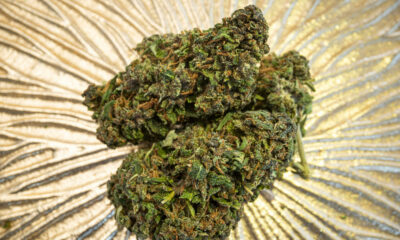

Looks Don’t Get You High. Smokeability Does.
-


Missouri Marijuana Regulators Revoke License Of Concentrate Manufacturer Involved In Massive Product Recall
-


Suspects rob Paseo District marijuana dispensary
-


Malta Limits Historic Marijuana Legalization Law, Sending Threat Letters To Consumers Over ‘Nuisance’ Odors
-


Gang uses drone to find and steal cannabis farms
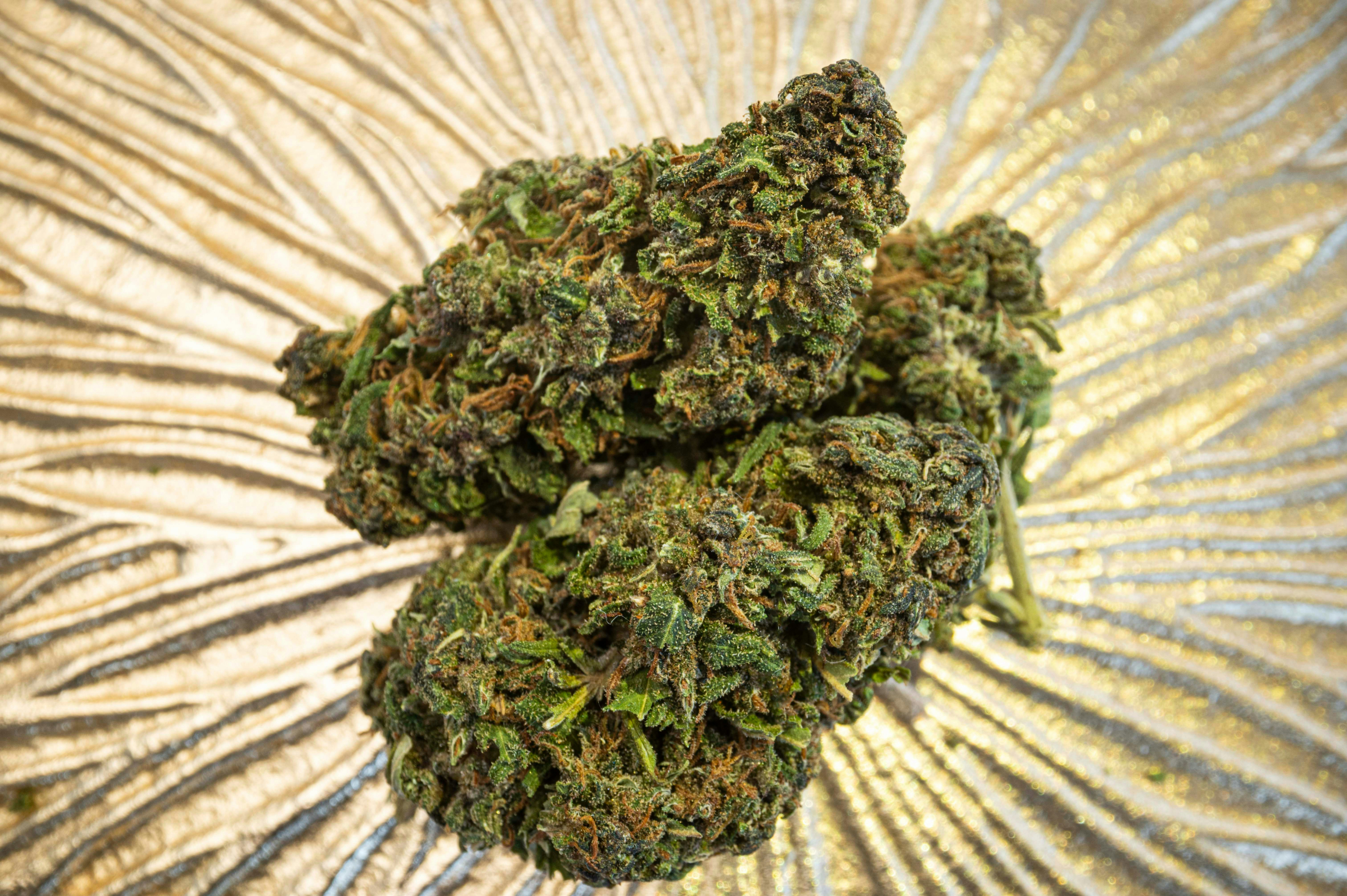
In today’s cannabis scene, “premium” and “high-grade” get thrown around so casually that they’ve lost all meaning. Anything with a little frost and a decent nose is getting labeled top-shelf, no matter how it actually smokes.
That’s the problem.
When every bag is called fire, even when it burns like mids, the entire culture suffers. Consumers get duped into paying premium prices for a mediocre product. New growers lose motivation to push the limits. Standards get stuck. The real heat gets buried under hype.
Somewhere along the way, the cannabis market started prioritizing how weed looks on Instagram over how it smokes. Bag appeal, frosty pics, loud branding — all of it’s been elevated to a point where looks have overtaken experience. But looks don’t have anything to do with smokeability. Photos don’t tell you how clean the smoke is.
Here’s the reality: True quality is how it smokes. How it hits the lungs, how it burns, how it lingers. That’s the only metric that matters.
Right now? There are crews out there putting out “clean mids” that smoke better than half the overpriced, so-called premium in Mylar bags.
If this culture wants to evolve, the standard can’t be set by the lens. It’s got to be set by the lungs. Every time.
— Submitted by Walter Bridger, Mount Maunganui, NZ.
About High Thoughts: Short Hits From the Community
Welcome to High Thoughts, a new series from High Times featuring quick takes, stray thoughts, and stoned wisdom from our global cannabis community. These aren’t polished essays or sponsored posts — just real voices from real people who live this culture every day.
In this edition, Walter Bridger, a third-generation cannabis advocate from New Zealand and founder of Trap Talk, reminds us why smokeability still matters more than bag appeal. Looks don’t get you high. Lungs do.
This article is from an external, unpaid contributor. It does not represent High Times’ reporting and has not been edited for content or accuracy.
Photo by Chiara David on Unsplash

Author: mscannabiz.com
MScannaBIZ for all you Mississippi Cannabis News and Information.
featured
Missouri Marijuana Regulators Revoke License Of Concentrate Manufacturer Involved In Massive Product Recall
Published
10 hours agoon
July 20, 2025
“The department enforces its regulations to uphold the Missouri Constitution and ensure safe access to marijuana product at our licensed facilities.”
By Rebecca Rivas, Missouri Independent
A Springfield marijuana manufacturer central to Missouri’s largest cannabis product recall last year had its license revoked Thursday.
State regulators found the company, C&C Manufacturing LLC, created a distillate—or THC concentrate that produces a high in edibles and vape pens—using unregulated THC.
Other manufacturers statewide bought the distillate and used it to make numerous brands of vapes, edibles or pre-rolled joints, including Rove, Zen and Packarillos. A total of 135,000 products were recalled last year.
After the state issued the company a notice of pending revocation in January, regulators discovered C&C had “removed or destroyed all of the marijuana product in its facility as well as its video records,” according to the Missouri Division of Cannabis Regulation’s Thursday press release announcing the revocation.
“C&C’s use of unregulated THC to create marijuana products, numerous violations of rule, and destruction of product and records in direct violation of DCR orders demonstrates clear disregard for law at the expense of health and safety and has no place in Missouri’s regulated market,” said Amy Moore, the division’s director.
Matt Cummins, CEO of GOAT Extracts, is listed as the designated contact for the facility and a number of GOAT products are on the list. The Independent reached out to the designated contact number listed on the state’s facility database for comment and did not receive a response.
Some of the unregulated THC involved using “chemical modification,” the release states. That could mean C&C bought a THC concentrate that had been made by converting hemp-derived CBD into THC using a chemical conversion process. Then the company used that to make its distillate, a process that had been used in another major recall case involving the company Delta Extraction.
The recall time frame is quite wide. It goes back to last year when companies were trying to ramp up for recreational marijuana sales.
Nick Rinella, CEO of Hippos Cannabis, told The Independent last year that his company unknowingly bought some of C&C’s distillate in 2023 when Hippos’ own supply was low at its grow and manufacturing facilities.
But he emphasized that this recall is not because of lack of testing. Once Rinella and other manufacturers got the distillate and made products with it, those were “properly tested” before they went on the shelves, he said.
“We can feel confident that those products were safe,” he said last August. “They passed all the tests, and we have some of the most stringent tests in the country.”
During the recall announcement last year, the division said no adverse reactions involving recalled products have been reported.
The division’s Thursday release states that the violations leading to C&C’s license revocation are “numerous.”
It states the company violated state and federal law by transporting Missouri marijuana outside of the state. C&C also sold marijuana products in Missouri that did not originate from Missouri marijuana and “failed to preserve records and marijuana products as directed by DCR’s prior directives.”
“The department enforces its regulations to uphold the Missouri Constitution,” Moore said, “and ensure safe access to marijuana product at our licensed facilities.”

Author: mscannabiz.com
MScannaBIZ for all you Mississippi Cannabis News and Information.
featured
Malta Limits Historic Marijuana Legalization Law, Sending Threat Letters To Consumers Over ‘Nuisance’ Odors
Published
14 hours agoon
July 20, 2025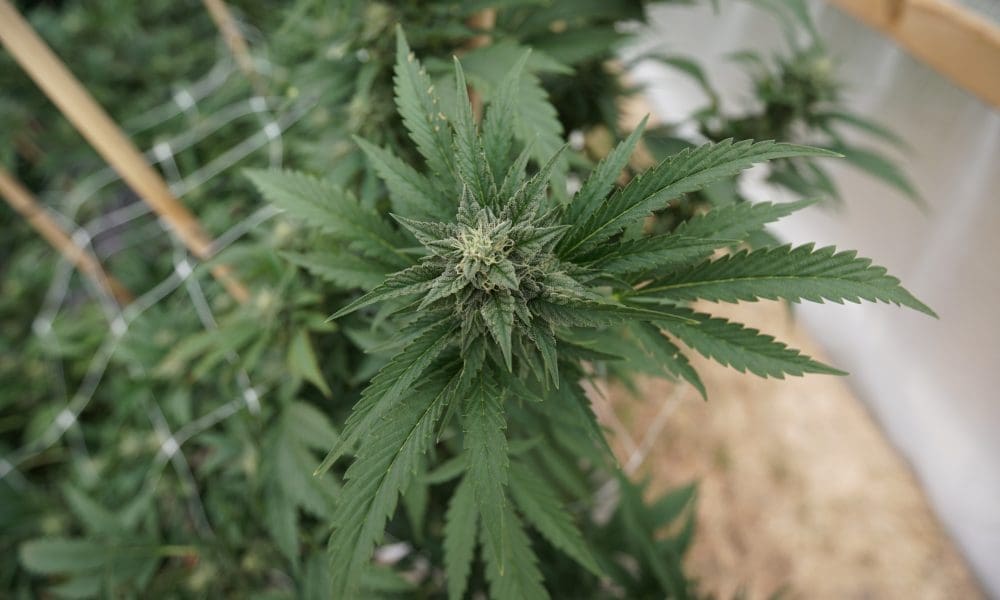
“We’re back to punishing plants and people instead of fixing the real problems, which are housing density, social stigma and lack of safe venues.”
By Felipe Neis Araujo, Filter
In late 2021, Malta became the first European country to legalize marijuana possession for adult use. Anyone over 18 could keep up to seven grams on their person and up to 50 grams at home, plus grow up to four plants. The act also established a regulatory framework that included cultivation and distribution by licensed nonprofits known as Cannabis Harm Reduction Associations (CHRAs).
Portugal and other countries had decriminalized personal possession, but it was still a civil violation. Malta’s reform was praised as a pragmatic, public health‑oriented pivot that would siphon revenue away from drug-trafficking groups and spare people the burden of a criminal-legal record. Public consumption remained banned, but people could smoke cannabis at home.
Four years later, the island nation’s governing Labour Party has changed its tune.
In May, the Parliament of Malta unanimously approved Bill 128, which sets a €235 fine for public consumption of non-medical cannabis—including “in any place where the [odor] causes a nuisance to third parties.”
Previously this had only applied to public consumption, but it now includes people smoking in the privacy of their home—if a neighbor complains about the smell. A free hotline has been set up to receive complaints. In July, warning letters began to arrive.
“A lot of people were smoking on their balconies and annoying people who lived above them,” Joey Reno Vella, the executive chairperson of the Authority for the Responsible Use of Cannabis (ARUC), told the Times of Malta earlier in 2025.
The law states that no “criminal proceedings…shall be taken except at the request or with the authorization of the Authority on the Responsible Use of Cannabis.” But it becomes a court matter if the fine goes unpaid—and then what? As time goes on, how will ARUC handle people who are fined repeatedly and cannot pay?
“We’re back to punishing plants and people instead of fixing the real problems, which are housing density, social stigma and lack of safe venues,” Maltese activist and former ARUC employee Karen Mamo told Filter at an academic drug policy conference in June. CHRA have been forbidden from operating on‑site lounges.
The policy U‑turn did not come out of nowhere. Policing remained part of legalization from Day One, targeting young people who smoked outside. Police officers pounced on those using cannabis on beaches or rooftops. Conservative lobbyists and the Catholic Church spread a narrative about Malta becoming the new Amsterdam.
In 2023, House of Representatives Deputy Speaker Claudette Pace told members of Parliament that she’d met a visually impaired man whose guide dog had gotten high from second-hand smoke. In 2024, the government launched a high-profile Responsible Cannabis Use campaign. Warnings about the fine for smoking in public or near minors appeared on billboards and Instagram posts.
The message was clear: Cannabis is still a threat to children and public order. These tired tropes ignore the fact that adults can drink alcohol and smoke cigarettes while holding a a child in their lap, and apparently not pose the same risk.
In the island’s densely populated apartment blocks, the issue of odor complaints emerged as a way to effectively roll back the 2021 protections.
In 2011, Malta saw an historic cannabis criminalization protest led by David Caruana, who was facing charges for growing cannabis plants on his balcony; cultivation was considered to be drug trafficking, even in personal-use quantities. Advocates highlighted the case of Daniel Holmes and Barry Lee, who in 2006 had been arrested for growing five plants. Lee died by suicide while awaiting trial; Holmes was serving a 10.5-year sentence. He was released in 2018.
NGOs such as ReLeaf Malta rallied public support and pushed politicians to imagine something better. This lobbying gained traction after 2015’s Drug Dependence Act nominally decriminalized personal possession, but left police free to detain users for 48 hours. Advocates fighting against piecemeal reform finally prevailed in 2021.
The new amendments will fall hardest on tenants who cannot control communal airflow and on working‑class youth who smoke cannabis outside because landlords ban indoor use. Cultivating the four permitted plants anywhere other than at home now comes with a fine of up to €1,000, yet the plants cannot be visible outdoors. Such fines may not deter affluent growers with detached homes and gardens, but may bankrupt someone renting a third‑floor walk‑up in Birkirkara.
The new law could easily clog the courts, with every contested fine becoming a quasi‑forensic dispute over whose nostrils caught what and when. And, perhaps most galling, the new law imposes mandatory data-sharing on CHRAs—they must hand over their membership lists to ARUC, sowing fear over how that information will be used.
Malta once offered reformers across Europe a glimpse of what nationwide legalization might look like outside the Americas. Yet Malta’s rapid reversal shows how fragile reform can be and that legalization is a process, not a finish line.
This article was originally published by Filter, an online magazine covering drug use, drug policy and human rights through a harm reduction lens. Follow Filter on Bluesky, X or Facebook, and sign up for its newsletter.
Photo courtesy of Chris Wallis // Side Pocket Images.

Author: mscannabiz.com
MScannaBIZ for all you Mississippi Cannabis News and Information.

Cannabis farm worker in California dies following a chaotic federal immigration raid

Looks Don’t Get You High. Smokeability Does.

Missouri Marijuana Regulators Revoke License Of Concentrate Manufacturer Involved In Massive Product Recall

Suspects rob Paseo District marijuana dispensary

Malta Limits Historic Marijuana Legalization Law, Sending Threat Letters To Consumers Over ‘Nuisance’ Odors

Gang uses drone to find and steal cannabis farms

THE LAST DAYS OF LEGAL CANNABIS (1990)

Regulating Intoxicating Hemp Products Is A ‘Priority,’ Illinois Lawmaker Says

A Totally Incomplete List Of The Top Cannabis Accounts And Creators To Follow On Social Media
Words Of Gratitude From The Heart Of Bennett Production

Wisconsin’s Biggest City Adopts Rules Limiting Sales Of THC-Infused Hemp Products To Adults 21 And Older

Mom, Apple Pie & Cocaine (1979)

Military Veteran Sues Feds, Claiming He Was Wrongly Detained After Immigration Raid At California Marijuana Farm

Kids caught smoking weed, vapes in videos; Augusta woman sought for questioning

Silk Road Operator Pardoned By Trump Makes Case For Legalizing All Drugs To Mitigate Harms Of Prohibition—Even If It’s ‘Not Necessarily What You Want To Hear’

Czech Republic President Signs Bill To Legalize Marijuana Home Cultivation And Allow Psilocybin For Medical Use

Senate Sets Initial Vote On Trump’s Pick To Lead DEA Next Week As Marijuana Rescheduling Sits In Limbo
High Times Greats: Hunter S. Thompson

Minnesota City Launches Government-Branded Cannabis Gummy—And It Wants Residents To Pick The Product’s Name

Over 100 pounds of cannabis seized during Oakland traffic stop

Gen Z Increasing Alcohol Intake Without Cutting Cannabis

Illegal marijuana grow worth $3M busted in Hacienda Heights, deputies say

Beat the heat with a Bong Island Iced Tea

‘Not Waiting on Broken Systems to Deliver’

Alert: Department of Cannabis Control updates data dashboards with full data for 2023

Connecticut Appoints The US’s First Cannabis Ombudsperson – Yes there is a pun in there and I’m Sure Erin Kirk Is Going To Hear It More Than Once!

5 best CBD creams of 2024 by Leafly

EU initiative begins bid to open access to psychedelic therapies

Free delta-9 gummies from Bay Smokes
New Study Analyzes the Effects of THCV, CBD on Weight Loss

Mississippi city official pleads guilty to selling fake CBD products

May 2024 Leafly HighLight: Pink Runtz strain

5 best autoflower seed banks of 2024 by Leafly

Curaleaf Start Process Of Getting Their Claws Into The UK’s National Health System – With Former MP (Resigned Today 30/5/24) As The Front Man

Discover New York’s dankest cannabis brands [September 2024]

Horn Lake denies cannabis dispensary request to allow sale of drug paraphernalia and Sunday sales | News

Local medical cannabis dispensary reacts to MSDH pulling Rapid Analytics License – WLBT

Press Release: CANNRA Calls for Farm Bill to Clarify Existing State Authority to Regulate Hemp Products

Nevada CCB to Accept Applications for Cannabis Establishments in White Pine County – “Only one cultivation and one production license will be awarded in White Pine County”

5 best THC drinks of 2024 by Leafly

6 best CBD gummies of 2024 by Leafly

The Daily Hit: October 2, 2024

5 best delta-9 THC gummies of 2024 by Leafly

Weekly Update: Monday, May 13, 2024 including, New Guide for Renewals & May Board meeting application deadline

People In This State Googled ‘Medical Marijuana’ The Most, Study Shows

Thailand: Pro-cannabis advocates rally ahead of the government’s plan to recriminalize the plant

PRESS RELEASE : Justice Department Submits Proposed Regulation to Reschedule Marijuana

Press Release: May 9, STIIIZY and Healing Urban Barrios hosted an Expungement Clinic & Second Chance Resource Fair
Trending
-
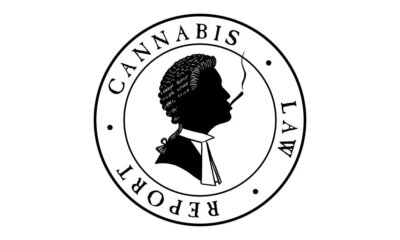
 California Cannabis Updates1 year ago
California Cannabis Updates1 year agoAlert: Department of Cannabis Control updates data dashboards with full data for 2023
-

 Breaking News1 year ago
Breaking News1 year agoConnecticut Appoints The US’s First Cannabis Ombudsperson – Yes there is a pun in there and I’m Sure Erin Kirk Is Going To Hear It More Than Once!
-

 best list12 months ago
best list12 months ago5 best CBD creams of 2024 by Leafly
-

 Business10 months ago
Business10 months agoEU initiative begins bid to open access to psychedelic therapies
-

 Bay Smokes1 year ago
Bay Smokes1 year agoFree delta-9 gummies from Bay Smokes
-

 cbd1 year ago
cbd1 year agoNew Study Analyzes the Effects of THCV, CBD on Weight Loss
-

 Mississippi Cannabis News1 year ago
Mississippi Cannabis News1 year agoMississippi city official pleads guilty to selling fake CBD products
-

 California1 year ago
California1 year agoMay 2024 Leafly HighLight: Pink Runtz strain

